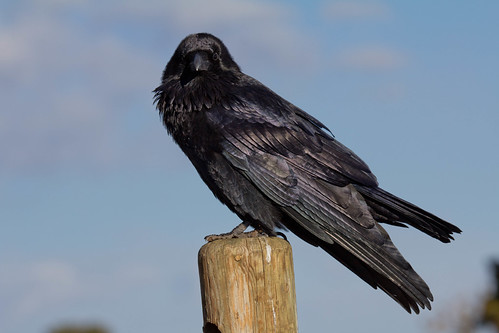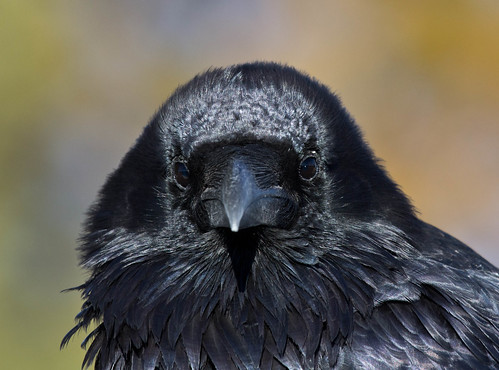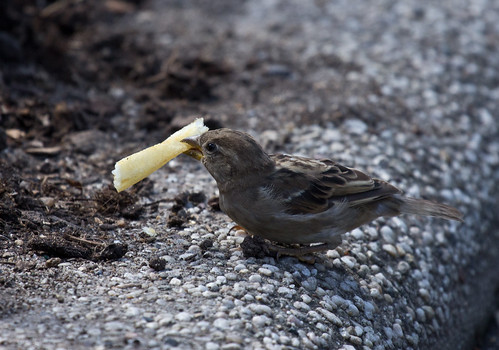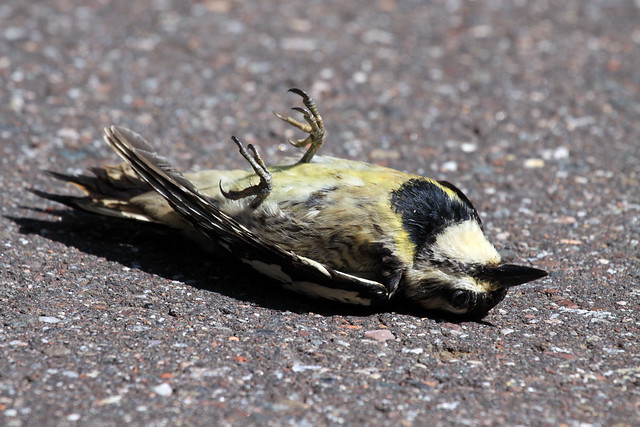Now that people are hunkering down almost everywhere, wildlife is feeling the repercussions, mostly for the better, but in the case of some birds who have not just adapted to but capitalize on human presence, sometimes for the worse. Several national and state parks have been providing live cams showing birds and mammals thriving, visiting park sections that are usually too choked with people, and people have been posting photos of coyotes walking right down empty streets in major downtown areas.
The sky over Los Angeles is shockingly clear and beautiful. Even though a bustling economy is obviously a very important thing, I wonder how happy Californians will feel watching that beautiful clean air shift back to the city’s ever-present smog when life gets back to normal, or whether people will insist on a new, cleaner normal. The first time I visited Los Angeles, in 1994, I was shocked at the yucky yellowish brown haze, but my cab driver said it looked ever so much better than it had in the 60s and 70s, before the Clean Air Act was passed and California set stricter requirements for auto emissions than anywhere else in the country. They need such strict standards because of the combination of a huge population, warm climate, and California’s topography, which traps pollution west of the mountains. Even with those strict standards, during the time I spent in California on two visits during my Big Year in 2013 and my visit this past summer, I never saw the kind of clear skies that we take for granted in Minnesota. Some Californians who don’t travel much may be shocked seeing just how blue the sky really is, or at least is supposed to be. The shift for them must be even more dramatic than my own shock at how blue the sky was after I had my cataract surgery.
Some urban birds will do just fine—earthworms, insects, and fruit trees will provide all the basic fare robins need. But birds used to picking up dropped food by city dwellers, including gulls, pigeons, House Sparrows, and starlings, may have more trouble getting enough food.
I wonder about the ravens Russ and I saw at the Grand Canyon back in 2011—we watched them open people’s coolers from their truck beds and raid dumpsters. Ravens are of course opportunistic omnivores, so they should be fine, but they’ll probably have to find some new sources of food to make up for the easy pickin’s they’re used to.
 |
| This raven was waiting on a post on the edge of the parking lot for a couple to walk away from their truck. The moment they were gone, the raven flew straight for the truck bed to check out lunch. |
With reduced traffic, this could have been an ideal year for conducting Breeding Bird Surveys without so many cars roaring through, but of course the Breeding Bird Survey has been discontinued for 2020. This is of course very sad, but every year, several of the volunteers conducting these surveys are injured, and this year any counters injured would risk not just themselves but also first responders and hospital personnel. Also, many routes run through public lands that are currently closed. I’ve been very disturbed reading of some birders entering closed parks and refuges, feeling like somehow their own birding in that place overrides the health and safety of the employees who work there.
I know how disappointing this feels—the two decades when I did my Breeding Bird Survey were SO enjoyable and soul-enriching, filled with auditory and visual pleasures and the satisfaction of contributing to a most important database. This year’s data would have been exceptionally interesting without the noise factor of usual traffic, but that would also have compromised the value of the data in terms of showing year-to-year patterns, because this year is an outlier in so many ways.
Chandler Robbins, who started the Breeding Bird Survey in 1966, was born during the 1918 flu pandemic. I'm sure he’d have been onboard with protecting people by closing down the Survey this year. Important as a consistent Breeding Bird Survey is, during such a severe health crisis, it’s certainly not essential. I’m a little surprised at how vociferously a few birders are speaking out against closing it for the year and talking about doing their routes anyway. We should be coming together as a nation to deal with this crisis, taking serious responsibility for one another, making our sacrifices for the greater good with acceptance if not with joy.
Meanwhile, my favorite story of all regarding how animals are benefitting from us humans giving them some space for a bit comes all the way from Hong Kong, where a pair of Giant Pandas have been living together at the Ocean Park Zoo for 13 years with no sign that they were the least bit interested in mating. Now, with all the human gawkers gone, the pair have started going at it with gusto. Belonging to the same household, they don't need to worry about social distancing from each other, but apparently social distancing from others was more essential than zookeepers realized. When I read the story about them, it instantly called to my mind a song popular when I was in high school ("I Think We're Alone Now), and I couldn't help but smile. When I listen to the news too long and feel my blood pressure rising, I'll think of those two pandas, doing their part to ensure that the world of tomorrow is a joyful one. The very thought of baby pandas makes me very happy.
 |
| Russ and me at the National Zoo in D.C. in 2006--we can still stand close together like this, being in the same household. And that is a Giant Panda in the tree behind us. |



